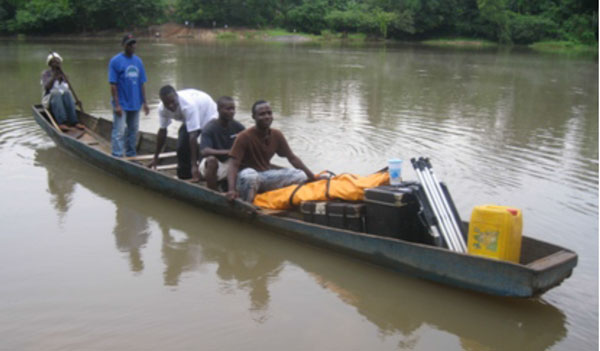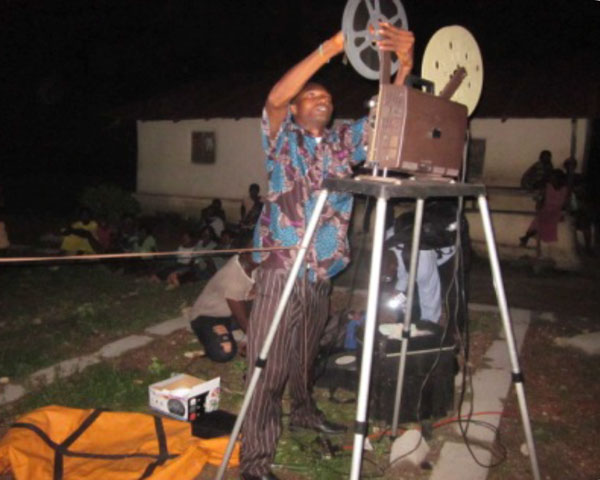18 Nov The Jesus Film – Telling Christ’s Story in Sierra Leone

Transporting the Jesus film equipment by canoe.
 Steve Dennie (right), Communications Director
Steve Dennie (right), Communications Director
A major evangelistic tool for Sierra Leone Conference is the Jesus film, which tells the life of Christ. The conference owns copies in Mende and Krio, the two languages spoken predominantly in southern Sierra Leone.
Jesus, a two-hour film based on the book of Luke, is considered one of the greatest evangelistic tools of all time. The vision for the film came from Bill Bright, founder of Campus Crusade for Christ, which provided most of the financing. It was filmed over a period of several months in the Middle East, sometimes using actual locations (like the Jordan River). Each day, new footage was sent to a team of biblical scholars, who reviewed it for biblical accuracy.
Warner Bros. released the film in the United States in 1979, but it got terrible reviews and lost money. Then, in 1981, Bill Bright created the Jesus Film Project with the vision of translating it into numerous languages and showing it around the world. In that way, the film has proven to be a huge success. New material was added in 2001 to show how Christ’s life fits into history—the creation story, Adam and Eve being expelled from the Garden of Eden, Abraham, and prophecies from Isaiah.
Since 1979, over 200 million people have made decisions to follow Christ after watching the film. It has been translated into nearly 1200 languages.
The Jesus film has been a very effective evangelism tool in Sierra Leone. They began showing it in Pujehun, a predominantly Muslim area. They use a portable screen or, if available, the wall of a building. The film requires an old two-reel projector. The conference projector gets a regular workout, but is on its last legs. They’re looking for a replacement.
After showing the film, an evangelist gives a talk and, often, many people will give themselves to Christ. They then organize discipleship training for the new Christians to get them grounded in the faith. In one place, the town chief saw the film and became a Christian. His influence as a figurehead in the community has made a big impact.
Many of these people, says Bishop John Pessima of Sierra Leone Conference, are not literate and have had no formal education. So, they plan to organize classes to teach them how to read the Mende Bible.
Sierra Leone Conference obtained the Mende and Krio versions of the Jesus film many years ago through the Great Commission Movement. The films are showing their age, but continue showing the ageless message of Christ to people in search of a Savior.


No Comments